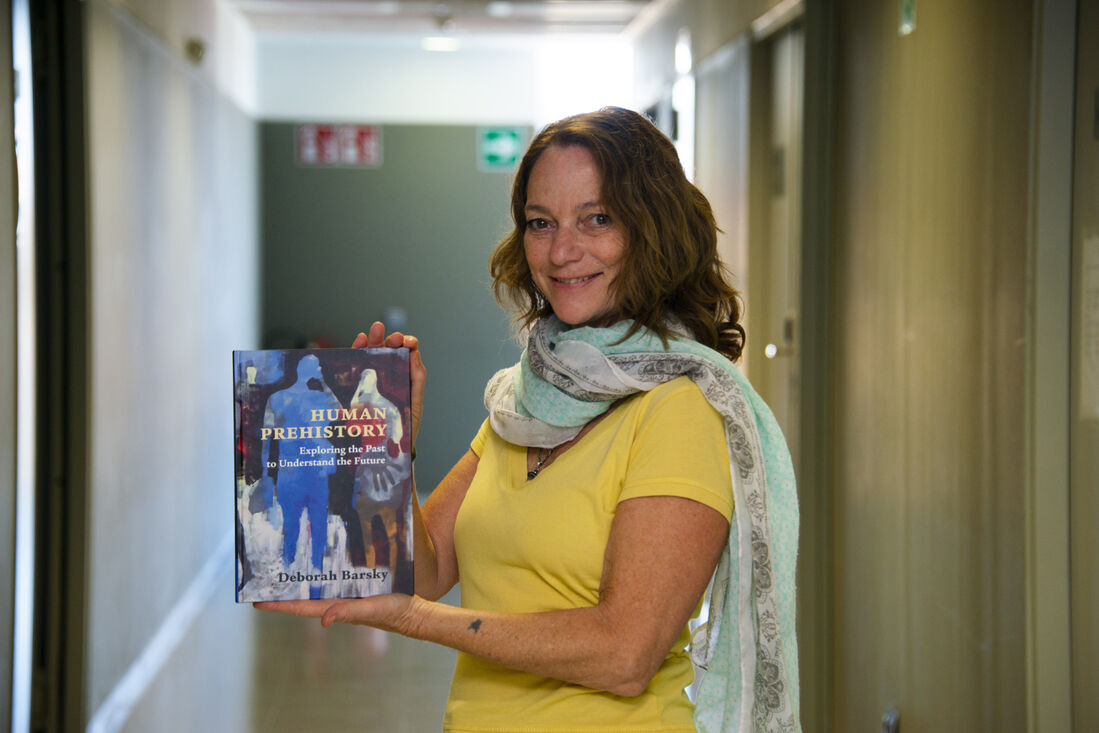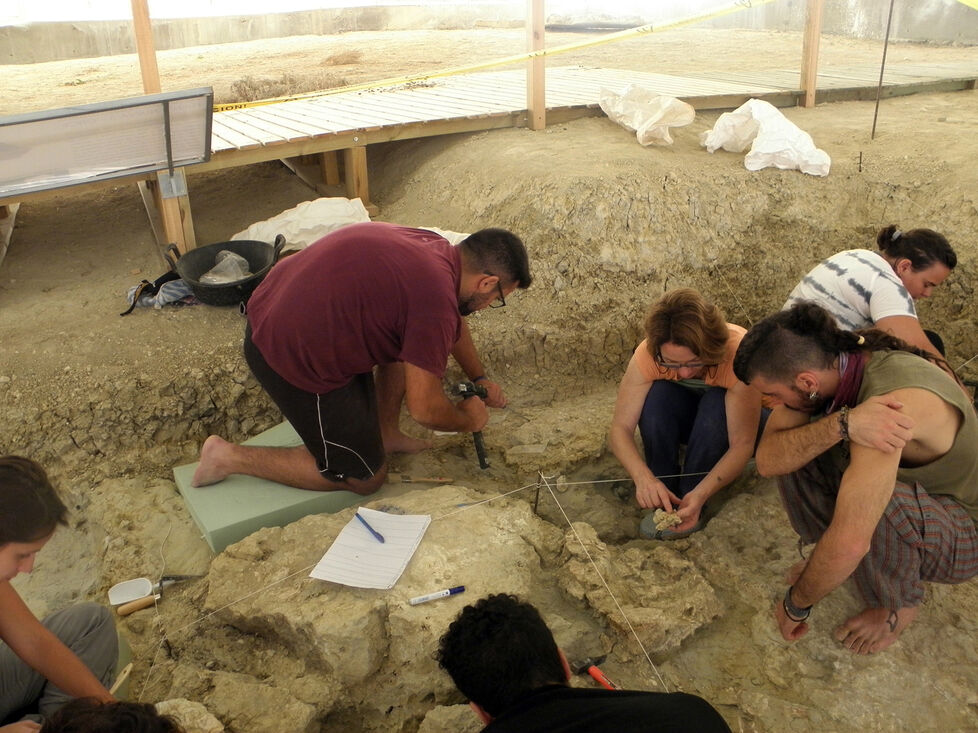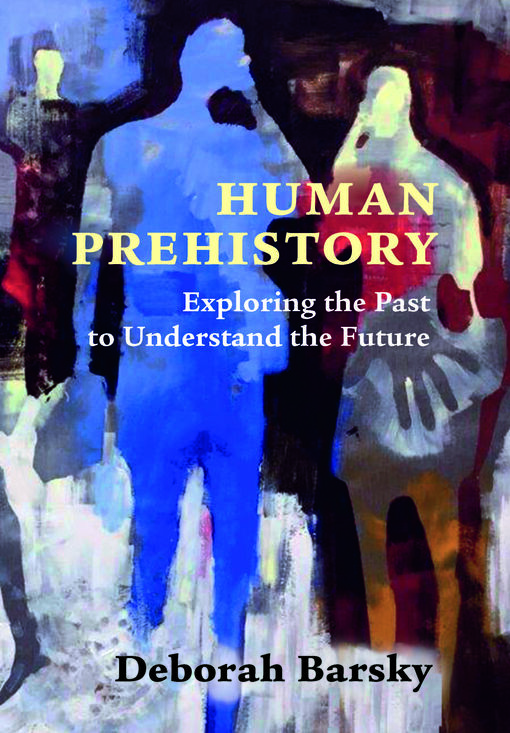Deborah Barsky: "knowing our past can help us rectify our trajectory towards the future"
Deborah Barsky: "knowing our past can help us rectify our trajectory towards the future"
Human Prehistory. Exploring the Past to Understand the Future (Cambridge University Press) is the title of the new book by archeologist Deborah Barsky, researcher at IPHES-CERCA and Associate Professor at the Open University of Catalonia (UOC) and the Rovira i Virgili University (URV).
We spoke to her so that she could explain her new book, also about her more personal side, how, when and why she became interested in delving into the knowledge of human evolution.
1- In what way do you think prehistory can help us with the challenges facing humanity today?
I think that most people today will agree that humanity has now reached a tipping point in terms of sustainability. The damages caused to planetary equilibrium- due largely to climate change, but also to the massive quantity of pollutants we are spewing daily into the Earth’s systemic spheres (the geosphere, biosphere, cryosphere, hydrosphere, and atmosphere). In addition to this is the absolutely massive and anthropically created technosphere (or anthroposphere), ensuing from our wasteful and materialist lifestyles, is now largely palpable in all areas of the globe: from the polar icecaps to the deepest reaches of our great oceans. In the modern world of rapidly-paced globalized existence, individuals are seeking a deeper understanding of themselves, of our species and its position in the world relative to all other life forms. For many, this search for meaning has even become a pressing need accompanied by a deep-seated sensation that somehow a return to the past could help us to rectify our trajectory into the future. My book uses concrete examples from the archeological record to explain how reaching into our shared past can assist us in identifying at least some of the long-term processes that have led us
to who we are today. Many of the problems rampant in the contemporary world, such as racism and social inequality, for example, could be rectified in the global mindset if people had a more thorough knowledge about our common ancestral background.
2- What would you say has been the biggest change in perspective that the study of prehistory has undergone since you began working in the field?
When I began working in prehistory, my research interests rapidly became focused on the oldest stone tool technologies known to humankind, attributed to the so-called Oldowan techno-complex. The oldest Oldowan dates to around 3 million years ago in Africa and is attributed to a range of hominins present in the early Quaternary landscapes, including of course first Homo (H. habilis), but also potentially different species of Australopithecines and Paranthropus. I found it fascinating to handle these ancient stone artifacts while bearing in mind that they were made by human cousins so very different: both anatomically and cognitively – from ourselves. I soon became involved in researching the Oldowan outside of Africa, that is to say, the very first hominins to wander into Eurasia, and had the opportunity to work on such key sites
as Dmanisi in the Georgian Republic (1.8 Ma) and The Orce archeo-paleontological sites of Barranco León and Fuente Nueva 3, situated in Andalusia (1.4 and 1.2 Ma, respectively). But when I began to study prehistory in mid-nineteen hundreds, very few specialists alleged that such early occupation of Europe was even possible. In fact at the time, there was a popularly accepted theory called the ‘short chronology’ that maintained that a sustained occupation of Europe only occurred around 500.000 years ago. But then a series of discoveries were made that would indelibly change our vision of when the oldest migrations into Eurasia happened and which hominins were the representative pioneers. I’m talking about the major finds from Dmanisi, of course, in the late 1980´s and then into the 1990’s, where hominins were found with Oldowan stone tools and faunal remains. In addition in 1995, the new hominin species H. antecessor was published from the Sierra de Atapuerca’s Gran Dolina site (layer TD6) with an age of some 0.9 Ma, even while the indisputably human-made lithics from the Orce sites were announced to the world around the same time. Since then, other sites have come to light around the Mediterranean Basin and even in China and India attesting to this very early spread of hominin species into and around Eurasia.
3- What made you start studying prehistory? Why did you start studying it?
I began my University cursus in Montréal (Canada) as a Masters student in Liberal Arts and Anthropology and became deeply interested in Archeology as a way to better understand human origins and lifeways from an evolutionary perspective. Since the Canadian archeological record is lacking in the older periods of human prehistory – earlier than the late Upper Paleolithic -I dreamt of going to Europe to excavate and pursue higher education. Logically my interests soon became oriented towards France; the cradle of systemic studies in prehistory and a place where numerous hands-on training opportunities were available in important archeological sites. I decided to go to France to explore the possibilities of pursuing my studies in the University system and, after a series of coincidental meetings, encountered the famous Professor de Lumley and his paleontologist wife, who invited me to excavate at the Late Acheulian site of Le Lazaret (Nice). This meeting constituted a major turning point in my life that led me to leave my home in Québec to do a Masters (Montpellier) and then a PhD in archeology (Perpignan). I then became a member of the French research team working in Tautavel’s EPCC-CERPT for nearly 20 years, before obtaining to my present position (since 2010) as a researcher at the IPHES- CERCA and teacher of the Undergraduate Degree in Human Evolution and Anthropology with the UOC at the URV (Tarragona). After nearly a quarter of a century in the field, my interest in ancient stone tool technologies and what they can tell us about the human story has never ceased to grow. Indeed, consecutive discoveries and improvements made in our capacity to study them is constantly renewing this passionate field of knowledge that presently encompasses a huge range of other specialties.
4- What would you tell someone (a detail, a discovery,...) to arouse their interest in prehistory?
In my experience, students or anyone thinking of embarking in the field of prehistory does so because they feel a passionate interest to learn about the human evolutionary story. As I stated in the previous question, prehistory now embraces a huge range of other fields of knowledge, even moving beyond the traditional multidisciplinary disciplines like: geology, paleontology or paleoanthropology, for example. Not only that, archeology applies so many modern technological solutions for locating and studying archeological sites, their contexts, and the finds that they yield. So, this is a very exciting time indeed to be a part of the huge efforts being made in the study of human origins and lifeways. Apart from keeping up on the archeological finds being made- a task now greatly facilitated by Internet and other multimedia sources -one of the best ways to discover what facet of archeology one might be most apt-for or most interested-in is to perform fieldwork. In prehistory we are working with huge swathes of time, different forms of human ancestors and various kinds of evidence, so that on-site experience is still the best way to familiarize
oneself with all of this and to finally begin to awaken one's own personal interests. lndeed, the relative complexity involved in learning and exploring all of the data available from each different field of study is greatly time-consuming and so it is generally necessary to specialize. Then, the results of hard-earned studies made in each branch of learning can finally contribute its own piece into the puzzle of the human evolutionary pathway.



